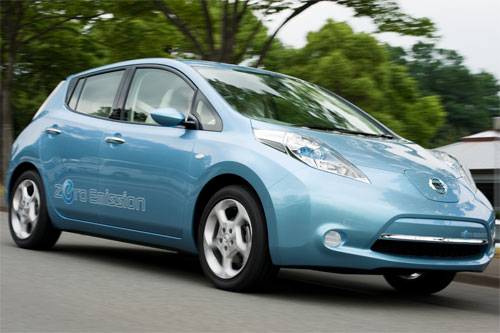2011 was a pretty traumatic year in the car industry with fuel and insurance prices rises placing an ever greater strain on motorists running costs. This resulted in overall car sales falling by 5% over the course of 2011 in the UK, but with more motorists opting for smaller and more fuel efficient options according to MoneySupermarket.
One car which was launched with the intention of overcoming these price rises was the all-electric Nissan Leaf which was handed the prestigious European car of the Year award upon its launch at the end of 2010. However, in light of this difficult sales environment, how has the Leaf performed over the course of its first year on sale and is it still on track to revolutionise the motoring landscape?
Sales figures
Nissan sold 9,674 Leaf models globally over the course of 2011. This is a disappointing figure, particularly when it considered that Ford sold over 100,000 Fiesta’s in the relatively small British car market alone over the same period.
Electric car critics have been quick to pounce on the revelation; claiming that it supports their view that demand for electric vehicles simply isn’t substantial enough for manufacturers to warrant interest. It is a commonly held view that the high initial purchase price of the Leaf is the biggest handicap as it often negates the potential running cost savings available.
Indeed, taking into account potential fuel, insurance and tax savings available; Leaf owners would be spending £1,302 per year less to keep their vehicle on the road compared to the running costs required for the average car. However, taking into account the initial purchase price difference between a conventional Fiesta for instance and a Nissan Leaf; it would take 12 years to recover this additional expense through these running costs alone. This is a statistic which is one of the largest reasons why motorists are failing to adopt electric cars with there not actually being overall cost savings available.
However, Nissan President Carlos Ghosn has squashed these accusations, claiming that the only reason why sales were not higher is that the company simply didn’t have the resources to build any more. Ghosn has claimed that he expects Leaf sales to double in 2012 and that there is a “pent-up” demand for electric vehicle which has not been recognised by manufacturers as of yet.
Confident of success
Indeed, Ghosn appears to be so confident in the eventual success of the electric car industry that he has committed Nissan’s sister company Renault to launching a complete electric vehicle range in the summer of 2012.
In total four fully electric Renault vehicles will be released over the course of the coming year, spanning all different size. Where these differ from the Nissan Leaf is in price; with them being far more obtainable for the average motorist. This could well overcome the major impediment which critics claim has held back the Nissan model.
The smallest of the Renault range is the Twizy which is expected to sell for £6,690. However, it is limited to a range of 60 miles between charges and only has room for one passenger. Battery hire costs are also not included in this price, with owners being forced to commit to this £40 per month expense in order to keep the car on the road. Nevertheless, even when electric consumption is taken into account, the total running costs of the Twizy will still be dwarfed by those required by the average motor.
Next up is the Renault Zoe, which is equivalent in size to the Renault Clio. This has enough space for 4 passengers and also has a vehicle range of 100 miles between charges which is the same as the Leaf. Despite this, it is expected to be put on sale for about £15,000 (once the government subsidy for electric cars has been taken into account) which will be approximately £11,000 less than the Leaf which has a similar level of performance. However, the monthly battery rent charge is still likely to apply.
The equivalent of the Megane in Renault’s electric vehicle fleet the Fluence which is capable of an even more impressive 115 miles between charges despite only costing £17,850 along with a monthly £69.60 rental charge for the battery. Like the three other electric vehicles launched by Renault, the Fluence is also blessed with a modern aesthetic appearance which in no way highlights the different nature of its design as has been the case with previous attempts on the electric vehicle market.
Renault also has commercial ambitions, with the largest vehicle in its electric fleet being the Kangoo van. Available from £16,990, this is not the most expensive of the four options; with the monthly battery rental price only being £62. However, it does have a slightly more limited vehicle range between charges compared to the Fluence of 106 miles which could preclude its overall performance for business purposes.
Victim of its own success?
The Leaf was the most popular electric vehicle in terms of global sales last year; beating its big rival Mitsubishi with their Volt model across the majority of different regions in terms of vehicle sales.
However despite being equivalent to the Nissan Leaf in terms of overall performance, the Renault models are significantly cheaper and only slightly more expensive than what motorists would otherwise pay for conventional motors. In addition, the monthly battery rental charge is not a particularly significant handicap when the overall fuel cost savings available are taken into account.
It could therefore turn out that the Nissan group becomes a victim of its own success, with the likely popularity of the Renault electric vehicle fleet having the potential to significantly harm Nissan Leaf sales in the regions where both manufacturers have a presence; this includes the significant European market.










